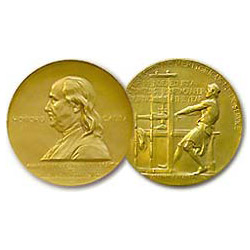
In April 1930, Time magazine had published the following letter:1
Convinced that much musical hypocrisy exists among our symphonic and concert audiences who, impressed by the eminence of the artists, claim to appreciate what they neither enjoy nor understand, I propose a test. Let Artist Kreisler seat himself, shabbily disguised, on a camp stool at a busy sidewalk corner. A 'Blind' sign above his dark glasses, let him draw his magic bow, and play, as only he can play it, the Caprice Viennois. How many, think you, of his applauding audience, as they hurried by, would pause longer than to jangle a few pennies into the tin cup strapped to the Kreisler knee? – Lyman Richards, M.D. Boston, Mass.
In May 1930, the Chicago Evening Post had published two articles which reported such an experiment. One of them2 was by Milton Fairman and the other3 by Karleton Hacket, the music critic of The Post. The journalists asked Jacques Gordon, a former concertmaster of the Chicago Symphony Orchestra to play in the street in disguise. He played for fifteen minutes on the corner of Michigan Avenue and Van Buren Street and for thirty minutes at Randolph Street, next to the public library. Though these are the most cultured areas in Chicago, Gordon failed to attract much attention from the public. Hacket had noticed that several famous musicians passed by. One of them had dropped coins into Gordon’s box, but none recognized 'one of the best violinists in America'. Gordon, whose price for a concert was $1,000, received $5.61 for this street performance. In November of the same year Jacques Gordon repeated the experiment in Boston. This time he got $1.27.
In 2007 Gene Weingarten reported a similar experiment in The Washington Post. Joshua Bell, 'one of the world's most famous musicians', played for 43 minutes in the L’Efant subway station in Washington, D.C. The man 'whose talents can command $1,000 a minute' failed to attract a crowd and received only $52.17. Out of this sum $20 came from a woman who had recognized Bell visually because she attended his concert three weeks before. Nobody else recognized Bell visually. Nobody at all recognized him by ear. Bell’s earnings are comparable to Gordon’s. According to the inflation calculator, $5.61 and $1.27 in 1930 equals $69.65 and $15.77 respectively in 2007.
Interestingly, Weingarten did not mention the Chicago Evening Post experiment in his article and in 2008 it earned him a Pulitzer Prize for 'quality of writing, originality and concision'. For some reason the Fairman and Hacket articles, doubtlessly more original and concise, and, perhaps, better written, did not get the prize. However in the later article, Weingarten admitted that his experiment was not original and gave credit to Milton Fairman and Jacques Gordon. He wrote that he had learned of the fact from one of his readers.
In their turn, Fairman and Hacket did not mention Dr. Richards in their articles. However, Michael Strauss, a City Editor of The Chicago Evening Post, gave him credit in a letter to Time magazine4.
On my part, when I learned of Weingarten’s experiment, I immediately knew that it was not original. In the 1980s I read a story about a similar experiment. I forgot the name of the violinist but clearly remember one detail. A watchman from a musical school for kids stopped by and said to the performer 'you have some talent, but lack technique'. None of the articles about Gordon that I found mention this. Perhaps, it was a later embellishment. Or, maybe, the article was about yet another experiment.
 So here is what we finally got. Gordon and Bell failed to attract an audience when their music was separated from their names. Weingarten got a Pulitzer Prize for a 77 year old story. Fairman and Hacket did not credit Lyman Richards. All is for the best in the best of all possible worlds.
So here is what we finally got. Gordon and Bell failed to attract an audience when their music was separated from their names. Weingarten got a Pulitzer Prize for a 77 year old story. Fairman and Hacket did not credit Lyman Richards. All is for the best in the best of all possible worlds.
I think that if the story indeed deserves a Pulitzer Prize, it should have been awarded to Dr. Lyman Richards. Here are some facts about the man who did not get a Pulitzer Prize. He was a Harvard-educated otolaryngological surgeon. He worked at the Children’s Hospital and Massachusetts Eye and Ear Infirmary in Boston. His patients included Queen Wilhelmina of Holland and musician Rudy Vallee. He taught at Harvard and Tufts. During WWII, Dr. Richards served as a Naval Officer in Pearl Harbor where he became a burns specialist. Of some relevance to our story is the fact that Dr. Richards played violin himself. You can see him doing this in the photo. His other interests included golf, skiing, squash and pole-vaulting.
I am grateful to Jack Eckert of Countway Library of Medicine, Kathy Van Der Vliet, and Katie Weldon for helping me to find Lyman Richards’s son, George Richards. The latter was good enough to send the photo of his father and tell some interesting facts about him.
References
- 1. Lyman Richards, 'Taste Test' Time 4/21/1930, Vol. 15, Issue 16.
- 2. Milton Fairman, 'Famous Fiddler in Disguise Gets $5.61 in Curb Concerts' Chicago Evening Post, 05/27/1930, page 1.
- 3. Karleton Hacket, 'Art Lovers Pass Up Gordon—Hackett' Chicago Evening Post, 05/27/1930, page 1.
- 4. Michael W. Strauss 'Taste Test Tried' Time 6/16/1930, Vol. 15, Issue 24.
- Photo: Lyman Richards – courtesy of George Richards.



